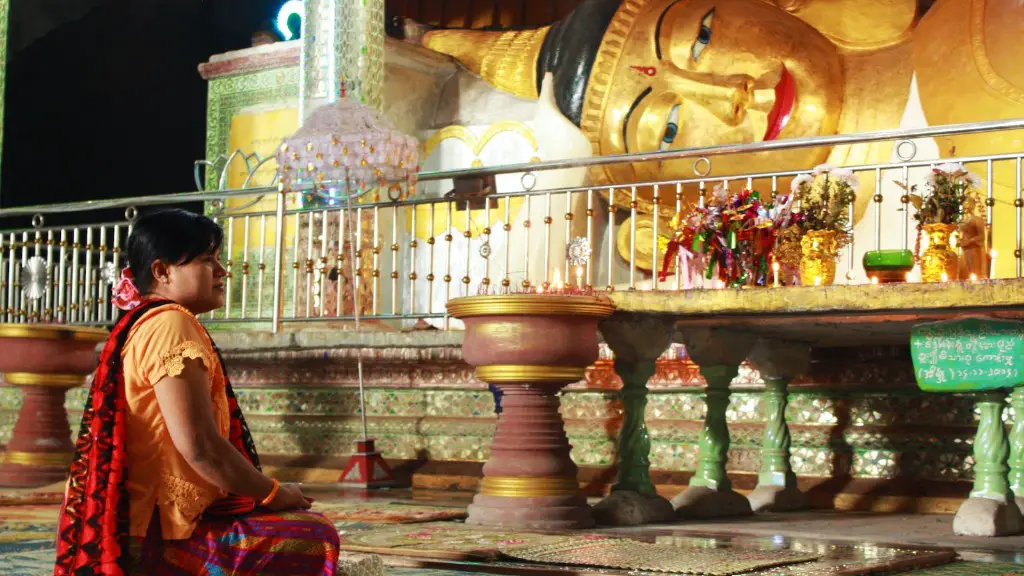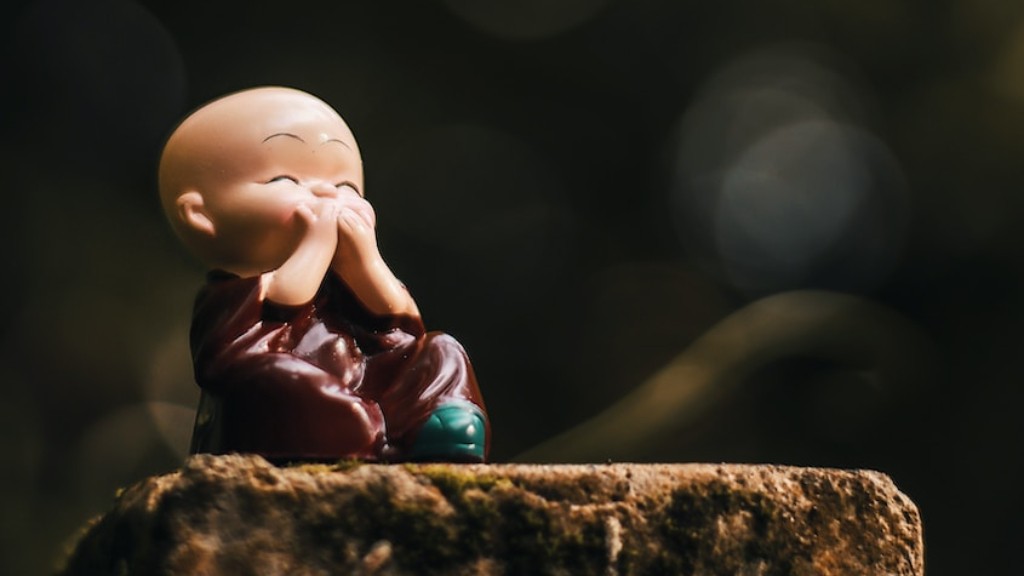Most adherents of the Hindu faith follow their religion through the ancient messages in their sacred texts, yet the modern practice of Hinduism has evolved around the idea of polytheism. In polytheism, two or more deities are venerated and invoked for their specific powers and functions. Hinduism is the largest polytheistic religion of the world, with as many as 33 crore gods. These gods are manifestations of Brahman, the source and sustainer of the universe. Brahman is also addressed as Brahman Absolute, the One without a second, since He is the source essence without a partner.
The notion of polytheism can be seen in Hindu literature, such as the Sanskrit “Rig Veda” and other Vedas. These texts list gods such as Indra (God of War and Weather), Varuna (God of Sea and Sky), Agni (God of Fire), and many others. Each one is believed to have a specific purpose and possible appeal to the Hindu population. Such gods also appear in the famous epics, such as the Ramayana and the Mahabharata. These gods then assume more tangible forms and represent specific aspects of life.
Besides the Vedic gods, other Hindu deities have become popular. They include Ganesha, the elephant-headed god of wisdom, Shiva, the god of destruction, and Vishnu, the Preserver, are among the most revered. The living representation of these gods assume importance in modern Hinduism and their festivals, like Diwali and Rath Yatra, are celebrated with gaiety and enthusiasm. Every deity is believed to carry out specific duties, like protecting the land, bringing water to the villages and ensuring growth and prosperity.
In terms of practises and rituals, “puja” – offering of flower, incense, and food – is a common way of worship. Hindus traditionally make these offerings to the deity or “murti” which is a hand-sized sculpture made of clay or stone. Hindus are often known to keep these murtis in their homes or temples to receive blessings from the gods. Temples, or mandirs, are central to the Hindu religious experience, incorporating symbols from the various gods. They are places of worship, but also quiet sanctuaries where devotees can take part in prayer and meditation.
In addition, Hinduism has a myriad of festivals to celebrate different gods. For example, Durga Puja is a nine-day festival to venerate the Goddess Durga. While Diwali celebrates the victory of light over darkness, Holi marks the joy of the arrival of spring and the celebration of colours. All over the country, millions of people come together to participate in these joyous occasions, creating a culture of deep respect, devotion, and camaraderie amongst the people.
Unlike most religions, Hinduism does not have a central, unified authority, but rather it is composed of diverse beliefs and practices. This allows the religion to remain ever evolving, and many new interpretations of old beliefs are continually added to the Hindu way of life. This adaptability has ensured the religion’s place as a cornerstone of Indian culture, one that has continually succeeded in pulling together people of diverse beliefs, languages, and backgrounds, allowing Hinduism to remain a towering force on the subcontinent.
Rituals
In Hinduism, rituals serve many purposes and are prescribed for every aspect of life. Often, the ancient sages in their wisdom, devised the various rituals to symbolize deeper meanings or show gratitude and respect with the acts themselves. There is no hard and fast rule of what to do and when, so everything is usually left to choice and individual preference.
Rituals such as bhajan (singing and dancing in devotion) and puja (offering of flowers, incense, and food) strengthen the connection between devotees and the divine. Puja is especially important in the worship of gods, and each deity has certain practices that must be followed to help spiritual energies take shape. Depending on who is being worshipped, different offerings may be present and different mantras may be chanted.
Rituals are also an essential part of important life-cycles in Hinduism, from the birth of a baby to the death of a loved one. Baby showers and naming ceremonies for newborns, as well as weddings and funerals for adults, all feature important practices that bring together families and communities.
Further, Hinduism celebrates different seasons, festivals and full moons, each of which brings an opportunity to perform rituals and activities, such as fasting and feasts. For example, the Holi festival is celebrated each year to signify the triumph of good over evil, and devotees offer many types of puja to the deities.
Festivals
Hindu festivals are of special importance in Hinduism, and are observed throughout the country. They are celebrated with great fanfare and enthusiasm, and offer devotees a chance to get closer to their gods and to receive their blessings. With each festival comes a special set of customs and rituals, and part of the joy of participating in these festivals is learning of their history and participating in the ceremonies.
The most well-known Hindu festival is Diwali, which celebrates the victory of light over darkness. During this festival, people lit clay lamps and send prayers to Lakshmi, the Goddess of Wealth and Fortune. Other festivals, such as Holi and Raksha Bandhan, commemorate various legends and feature activities that symbolize different aspects of life. For instance, Holi is celebrated with colours to signify the arrival of spring and the joy of living.
Hindu festivals are often multi-day affairs, and devotees spend time together in prayer, feasting, music, and dance. During these festivals, it is customary for Hindus to exchange gifts and sweets, as well as visit their local temples to offer prayers.
Murti Worshipping
Worshipping of murtis, deities represented in physical form, is a prevalent practice in Hinduism. In its simplest definition, murti puja is an offering of prayers to the various gods and goddesses as a way to seek their blessings and protection. This practice can take many forms, from simply lighting a lamp or incense before a deity’s statue or painting, to a full-fledged puja ceremony that features a variety of offerings.
Traditionally, devotees perform elaborate murti puja ceremonies with offerings of food, incense, and other items. Hindus often make these offerings to their chosen deity or murti, usually accompanied by chanting of mantras or a prayer. In addition to these offerings, pooja ceremonies are also a way of expressing gratitude and love towards the divine.
Murti worshipping is most commonly done in a Hindu temple or at a sacred spot in the house. Hindus also have the tradition of carrying a murti of their chosen deity with them whenever they travel, as a way to provide a sense of security and protection. The practice of murti worshipping is an integral part of Hindu devotion, and it is believed that offering prayers to the gods will bring peace and joy to those who are devoted.
Implications
The practice of polytheism has an enormous and far-reaching impact on Hindu society and culture. This ancient belief system positions each one of the numerous gods as a manifestation of Brahman, the absolute source of all life and creates an ever-evolving respect for these gods and their multiple roles in creation and existence. Moreover, it is the polytheistic philosophy that makes it possible to venerate and embrace the small gods, the popular ones, and their living incarnations, while still recognizing Brahman as the ultimate source of reality.
This polytheistic system can also be seen as a reflection of the rich and diverse culture of India that has evolved over more than 40,000 years. The variety of gods and beliefs, combined with the wide array of rituals, help to unite people of different backgrounds and languages, despite the many differences that sometimes keep them apart. In this way, polytheism has helped to ensure that Hindus can celebrate and express their unique beliefs and their collective unity.
Finally, polytheism is an important source of inspiration for many of the popular arts and literature in India. Paintings, sculptures, and poetry often reflect an understanding of the many Hindu gods, and the stories associated with them. This creates a sense of belonging within the Hindu community as well as a source of entertainment and education for those who are less familiar with the traditions.

